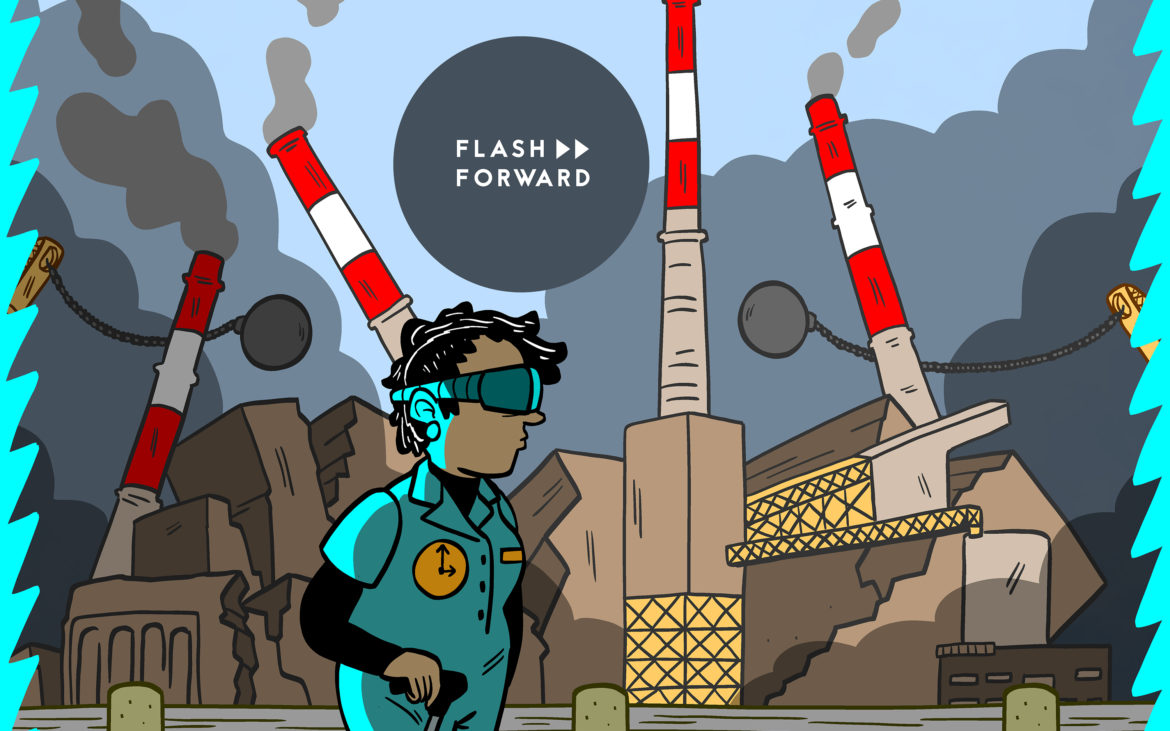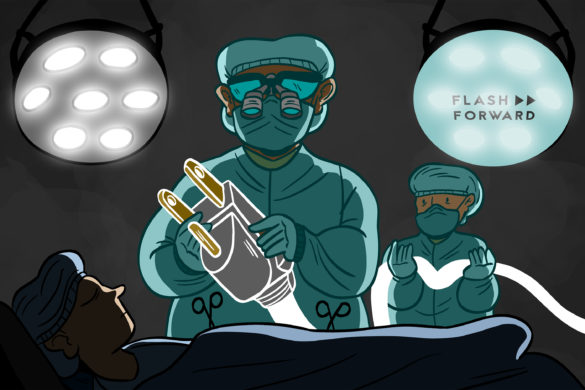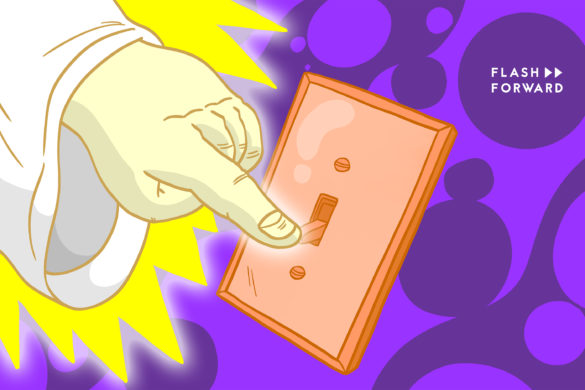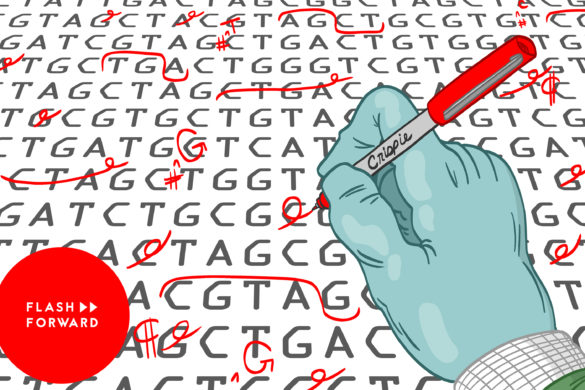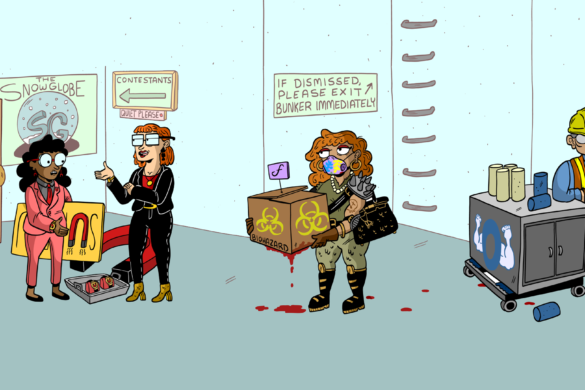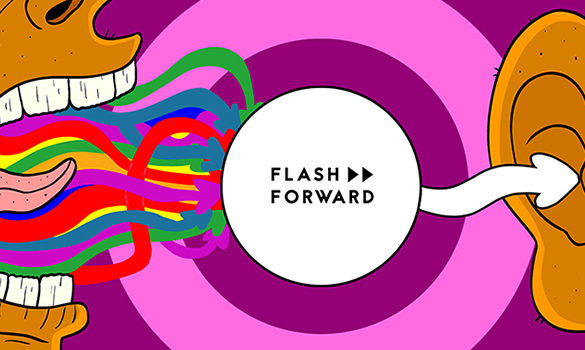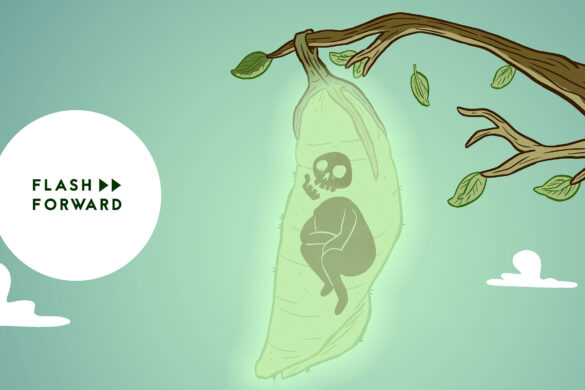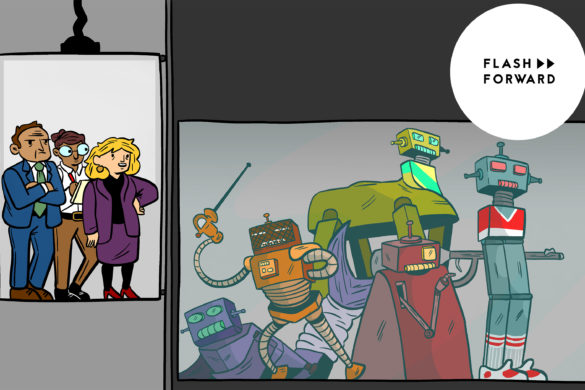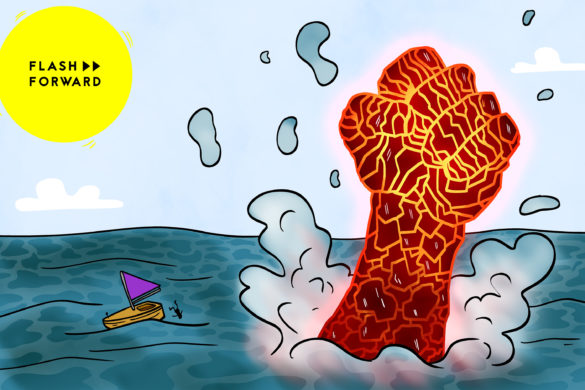Today we travel to a future where humans crack fusion and can generate huge amounts of power from the most common element on Earth with nearly no waste.
Guests:
- Charles Seife, professor at NYU and author of Sun in a Bottle: The Strange History of Fusion and the Science of Wishful Thinking
- Sabina Griffith, communications officer at ITER
- Nicholas Evans, professor of ethics at UMass Lowell
- Michael Wahid Hanna, senior fellow at The Century Foundation
Further Reading:
- Sun in a Bottle: The Strange History of Fusion and the Science of Wishful Thinking
- Fusion catches a cold
- Fusion Energy’s Dreamers, Hucksters, and Loons
- ITER FAQ
- ITER construction live feed
- Castle Bravo: The Largest U.S. Nuclear Explosion
- Edward Teller, Atomic Heritage Foundation
- Considering the obvious benefits of fusion energy and the considerable efforts spent trying to attain them, why hasn’t fusion research so far produced better results?
- The Merits of Fusion
- Four decades later, has America finally got over the oil crisis?
- Oil Shock of 1973–74
- Contrasting Dual-Use Issues in Biology and Nuclear Science
- The Road to Fusion
- Why nuclear fusion is gaining steam – again
- Experts Urge U.S. to Continue Support for Nuclear Fusion Research
- Infinite Energy Magazine — Arthur C. Clarke
- The Spacecraft Designs of Arthur C. Clarke
Actors:
- Radio Host — Brett Humphries (a Patron!)
- Moses Blackman — Eden Rohatensky
- Dr. Amelia Brand — Soleil Ho
- Lawrence O’Donnell — Tamara Krinsky
Flash Forward is produced by me, Rose Eveleth. The intro music is by Asura and the outtro music is by Hussalonia. The episode art is by Matt Lubchansky.
If you want to suggest a future we should take on, send us a note on Twitter, Facebook or by email at info@flashforwardpod.com. We love hearing your ideas! And if you think you’ve spotted one of the little references I’ve hidden in the episode, email us there too. If you’re right, I’ll send you something cool.
And if you want to support the show, there are a few ways you can do that too! Head to www.flashforwardpod.com/support for more about how to give. But if that’s not in the cards for you, you can head to iTunes and leave us a nice review or just tell your friends about us. Those things really do help.
That’s all for this future, come back next time and we’ll travel to a new one.
FULL TRANSCRIPT BELOW
▹▹ ▹▹ ▹▹ ▹▹ ▹▹ ▹▹ ▹▹ ▹▹ ▹▹ ▹▹ ▹▹ ▹▹ ▹▹ ▹▹ ▹▹ ▹▹ ▹▹ ▹▹ ▹▹ ▹▹ ▹▹ ▹▹ ▹▹
Rose: Hello and welcome to Flash Forward! I’m Rose and I’m your host. Flash Forward is a show about the future. Every episode we take on a specific possible… or not so possible future scenario. We always start with a little field trip to the future, to check out what’s going on, and then we teleport back to today to talk to experts about how that world we just heard might really go down. Got it? Great!
Just as a quick reminder, there are still some posters left for the 100th episode special anniversary poster. You can find out more about that at flashforwardpod.com/shop. Again, we are only printing 100 of them, so if you want one you should go get it now. Okay, let’s go to the future.
This episode we’re starting in the year 2039.
***
NPR Host: Tensions were high at the unveiling of the world’s first working fusion reactor today. The two decade long project has drawn both excitement and criticism from all over the world. Moses Blackman has the story.
Moses Blackman: The bitter cold didn’t deter thousands of excited onlookers today at the official ribbon cutting ceremony for the Leizhenzi Accelerator, the much heralded fusion power plant in Hefei, China.
[wind] [mic sounds]
[crowd cheers]
Dr. Amelia Brand: For centuries, the idea of unlimited power has been the realm of science fiction. But today, thanks to the hard work of thousands of scientists, engineers, lawmakers, and public advocates, we’re making that fiction a reality.
Moses Blackman: Dr. Amelia Brand, the executive director of the project, assured the crowd that despite some rocky history, the plant was now completely on track.
Dr. Amelia Brand: I think some people have written the project off as a money pit, and I’m not going to pretend that the project was always on the right track. But we’ve really homed in over the last ten years, righted the ship, and done what so many people told us was impossible.
Moses Blackman: If the power plant works as advertised, it could provide energy to all of Hong Kong, replacing the mega-cities other forms of power like coal and even solar or wind. And if all goes according to plan, in just a few years, the power will be virtually free.
Dr. Amelia Brand: We estimate that the plant will offset its cost in four years. After that, I mean, the cost to operate the plant isn’t zero, but it’s certainly far more efficient than anything we’ve ever seen before.
Moses Blackman: But not everybody was there to celebrate. Protestors came from all over to speak out against the plant.
[chanting]
Lawrence O’Donnell: These researchers have no idea what they’re about to unleash.
Moses Blackman: Lawrence O’Donnell drove for five hours to protest the new power plant.
Lawrence O’Donnell: Fusion sounds like a good idea, but trust me, this won’t go the way you think it will.
Moses Blackman [in the field]: Is there something specific you’re worried about?
Lawrence O’Donnell: The ripple effects of unlimited power aren’t good, just because they can, doesn’t mean they should.
Moses Blackman: The engineers at Leizhenzi say that the plant is completely safe.
Dr. Amelia Brand: Everything we’re doing here is one hundred percent tested and incredibly safe. If something breaks in the plant, the only danger is that it won’t work, and it will cost us more money.
Moses Blackman: Experts agree that the plant is far safer than the traditional nuclear fission power plants. But whether the Leizhenzi Accelerator can deliver on its promises of virtually free, unlimited energy, remains to be seen.
Moses Blackman: For KHGG, I’m Moses Blackman.
Rose: Okay! Today we’re talking about fusion energy. This is something that, depending on who you ask, is either definitely the solution to our energy woes, or a complete waste of money and red herring. It’s also one of those technologies that has been “five years away” for about… oh… 80 years? Today, in the Southeastern part of France, there’s a fusion pilot project that has been chugging along for decades,, spending 20 billion dollars to try and prove that fusion can work to generate power. But not everybody is convinced that they will succeed. Or that fusion is even worth that kind of investment.
But before we get into any of that, let’s talk about what fusion actually is.
Charles Seife: Fusion is the art of getting power out of atoms by smashing them together.
Rose: This is Charles Seife, he’s a professor of journalism at NYU. And just in the interest of full disclosure, Charles was once my professor at NYU. But he’s also the author of a book called Sun in a Bottle: The Strange History of Fusion and the Science of Wishful Thinking.
Now, there are two ways of getting energy out of atoms.
Charles: You can take large ones and break them apart, and that yields energy. And often a lot of waste. And you can take really small ones, like hydrogen and smash them together. That also yields energy, and a lot less waste.
Rose: So the nuclear energy that we have today is the first kind, where you take large atoms and break them apart in a process called fission. That’s the kind of nuclear energy that comes from power plants like the Kori power station in Japan, or the the Bruce power station in Canada. It’s also the kind of energy involved in maybe the more famous stations, like Chernobyl and Fukushima and Three Mile Island. And this kind of nuclear power is controversial because the process of fission creates a lot of waste that is radioactive. And while accidents are rare, when they do happen, they can be really scary.
But there’s another way to get energy out of atoms. Instead of breaking them apart, you can also smash them together. And for that process, the process of fusion, you don’t have to go out and find a bunch of rare uranium. You just need hydrogen isotopes, which are all over the place. And when you smash those hydrogen isotopes together, you can get energy, and you generate very little waste. Basically, you could use sea water to power the entire world. Okay, so far this seems vastly superior to fission, right? What’s the catch? Well, now that we know how to do it, getting fission to work, is actually pretty easy.
Charles: If you put enough fissile material in a pile, and initiate it with neutrons, or some other way, all of a sudden you’ll have atoms splitting apart, yielding neutrons, making atoms split, yielding neutrons. And you’ll get what’s called a chain reaction.
Rose: Fusion, on the other hand, is really hard to make happen.
Charles: You’ve got to smash atoms, which repel each other. They don’t want to stick together unless you hit them so hard that their nuclei collide.
Rose: And that is the grand challenge of fusion. You have to get these atoms, these extremely extremely tiny things, to hit each other just right under just the right conditions, for this to work. So getting these tiny, tiny things to smash together in exactly the right way, is really hard. Hard enough that so far, nobody has been able to build a fusion reactor that makes sense, that actually turns enough of this material into energy for a low enough cost to make it a reasonable power source.
But it’s not for lack of trying. In fact, physicists have been interested in using fusion for both power and for bombs since the Manhattan Project, in the 1940’s. Over the last eighty years, the promise of fusion has been almost irresistible to physicists, luring in some of the greatest minds in science into sort of an endless maze. Fusion is so alluring it almost seems like some weird kind of weird Shroedinger’s catnip. And its is so enticing because it almost seems like magic.
Charles: There’s a law of physics that says you can’t create energy out of nothing. That’s anytime you are generating energy, you’re getting it out of some other source. You can’t have a perpetual motion machine.. Fusion is as close as we can get, technologically to kind of breaking that rule. Locked in every atom — locked in the most common element in the entire universe — is this boundless amount of energy, that if we just do it right we can harness.
Rose: And this is the promise that first captured a physicist named Edward Teller, in the early 1940’s.
Charles: He emigrated to the United States from Hungary. And, one of his manias was anticommunism. And this was because, when he was a kid, there was a communist revolution in Hungary, and the communists took over his house, and he personally saw what could happen when a dictatorial power comes to be. And, for much of his life — for the rest of his life — he was dedicated to fighting the spread of communism.
Rose: Edward Teller was a very intense guy, about a lot of things. Apparently, Enrico Fermi, another famous physicist, once told Teller, “in my acquaintance, you are the only monomaniac with several manias.” And, in the context of the Manhattan Project, Teller’s obsession with stopping the spread of communism, was an asset.
Charles: Edward Teller was an important part of the Manhattan Project to build the atom bomb.
Rose: The problem was that he never wanted to stop.
Charles: He wanted to build weapons of immensely more power: the hydrogen bomb.
Rose: The hydrogen bomb is a bomb that uses a fission reaction to drive a fusion reaction — basically they harness the power of an atomic bomb to force atoms to collide and create a fusion driven explosion. And Teller actually wanted Oppenheimer, and the rest of the Manhattan Project, to focus on this bomb, instead of the atomic bomb they wound up developing. They refused, and Teller actually never forgave Oppenheimer. In fact later on, after the war, Teller would be instrumental in basically ruining Oppenheimer’s life, in revenge, which is a story you can read about in Charles’s book.
Even though the Manhattan Project decided to focus on the atom bomb, Teller kept his hydrogen bomb ideas going. And after the US dropped atom bombs on Hiroshima and Nagasaki, while the rest of the world tried to move on, and move towards peace, Teller refused to stop working on weapons.
Charles: Between 1945 and 1952, he wound up dedicating his life to building weapons that were more powerful than the atomic bomb.
Rose: These hydrogen bombs that he worked on were… honestly very terrifying. The largest hydrogen bomb that the US ever detonated was called Castle Bravo. The device itself weighed 23,000 pounds and it was 1,000 times more powerful than the atomic bombs dropped on Japan. And hydrogen bombs can get even bigger.
Charles: In theory, there’s really no limit to how big these bombs can get. The Soviets have the record. They set off a 50 to 100 megaton bomb called the Tsar Bomba. It was just absolutely enormous. To give you a sense of scale, Hiroshima is about 12 to 15 kilotons. So it’s taking Hiroshima, multiply by a thousand, and then multiplying by five again. And that’s the Tsar Bomba. And you can get bigger than that if you want.
Rose: And Teller wanted to get bigger than that. He was completely obsessed with these weapons. Teller did not believe that any peace treaties could be made with the Russians. Remember, one of his many manias was anticommunism. So when the US signed deals with the Soviet Union, limiting their development of things like the hydrogen bomb, Teller was furious. In his mind, to stop working on developing this technology was to admit defeat. The communists would come for us anyway. So, he developed a work around, and started pretending that he wanted to use nuclear fusion for good. For things like power. Teller called it Project Plowshare, named after a Bible verse in Isaiah that says “they will beat their swords into plowshares.” The idea here being that they would take this weapon of war, and turn it into something good in the world.
Here’s Teller talking about Project Plowshare in 1965, at Ohio State University
Interviewer: Dr. Teller we’ve been discussing the peaceful uses of nuclear energy. Are there peaceful uses of nuclear explosions?
Dr. Teller: Indeed. There are such uses. We can move, with nuclear explosions, great amount of amount of earth, very cheaply.
Charles: The idea was that you could use hydrogen bombs to carve out harbors. You could use nuclear bombs to build canals, or to liberate gas supply that were otherwise unavailable. Or you could use nuclear bombs to do mass excavations, build transcontinental railroads, to study other planets. He, at one point, even actually suggested nuking the moon..
Rose [on the phone]: Why? Just to see what happened?
Charles: Well yeah. He said to nuke the moon to see what sort of disturbance it would cause. It’s crazy…
Rose [on the phone]: That seems like such a bad idea!
Charles: Well it’s, I mean, at some level it’s not stupid, because if you have no way of studying what the moon is made of, how do you get a sample? How do you study what the material is? Well, if you put a hydrogen bomb on the surface of the moon, you blow up a big cloud. And that allows you to study from behind. If you have a light source behind it, you’re doing spectroscopy. And if you detonate a hydrogen bomb behind it, you’ve got a lot of light, too. So, back in 1958 or whenever, the idea of putting boots on the moon to collect a sample seemed more ridiculous than nuking the moon, which was actually much less technologically difficult.
Rose: So, Teller was pushing all these various fusion projects, because it was the only kind of fusion research he was allowed to do under these peace treaties.
Rose [on the phone]: Do you think he cared about those Plowshare projects? Or did he just want to get around these agreements and just build more bombs?
Charles: I think the primary motivation was to build more bombs. I think he, of course, wanted these things to succeed. Anything he can do to help humanity was a good thing, but it’s kind of a spin off.
Rose: The other thing you should know about Edward Teller, is that he was incredibly optimistic.
Charles: One of his colleagues even started measuring optimism in Tellers. If you were the most optimistic person in the world, you were one Teller.
Rose: And he truly believed that he could crack nuclear fusion in just a couple of years. He would regularly say that we were just around the corner from figuring out how to create a fusion power plant, or a super light fusion bomb, or figuring out a way to detonate hydrogen bombs underground to create a gigantic steam engine.
Charles: I think there’s always a certain arrogance about science; that we think we can understand nature. And I think the more arrogant we get, the more we think we really understand things that we don’t. And I think Teller happened to be an extremely arrogant sort. He really did believe he understood the way nature thought, the way nature behaves. And I think Teller was the ultimate technofile. He thought that, with our technology, with our science, we will bend nature to our will. And nature often has a way of squirting out of our hands. Bending us, rather than allowing us to bend her.
Rose [on the phone]: Do you think that there’s something about fusion that makes people overconfident, compared to other forms of…. Not that this doesn’t happen in other forms of science, but it seems as though maybe they might have learned, since the 50s, that its not five years away? I don’t know.
Charles: Yeah. One would think they would learn better by now, but they haven’t. We get the “fusion is five years away, ten years away, twenty years away” sorts of announcements all the time, still. I think that this feeling that fusion is just outside of our grasp, and we can solve this classical problem… I think people lose their perspective. And it’s really a shame because there’s real science to be done, and it does have a lot of potential. But it needs a sober approach, and people tend not to be sober when it comes to fusion.
Rose: When we come back, we’re going to talk about the various approaches to fusion that are out there now, and what the ethical questions are around developing and deploying this technology. But first, a quick break.
[AD1]
Rose: Okay, let’s talk about fusion today. There are a couple of different ways that people are thinking about making fusion reactors. And there are a few fusion projects out there. Perhaps the most famous is something called the ITER project, that’s I-T-E-R.
Sabina: Well, in short, we are trying to rebuild a small, articifial, sun here.
Rose: This is Sabina Griffith, a communications officer at ITER.
Sabina: Scientists have been looking at the sun and the stars for decades, if not for centuries, and imagining what is happening up there. Why can’t we reproduce that sort of energy here on Earth?
Rose: Sabina has worked at ITER for 13 years, but the project started long before that. In 1985 Ronald Reagan and Mikhail Gorbachev came up with this idea to jointly fund an energy research project. Eventually the project was named the International Thermonuclear Experimental Reactor, but today ITER had dropped the word parts of its name and just goes by ITER. They now say ITER is Latin for “pathway” as in, a pathway toward a new source of energy. Fun fact, there’s actually a term for when an acronym used to stand for something, but no longer does. Like SAT. They’re called Orphan initialisms. So now you know.
Anyway, ITER’s history is… let’s say rocky. After the 1985 meeting between Reagan and Gorbachev, the actual money for this project never really materialized.
Charles: In the late 90s, the United States pulled out of this big international project, more or less killing it. A few years later, the United States was back in, and it was back on again.
Rose: Today, ITER is back in action. There are 35 nations involved, each chipping in money and/or supplies.
Sabina: China, all of Europe. India, Russia, Korea, Japan, and the United States of America. So with all the European countries, minus one very soon, at the moment we are still 35.
Rose: And ITER uses a type of fusion device called a tokamak. And the basic premise of the tokamak is that it uses a magnetic field to contain and manipulate a doughnut shaped ring of super hot plasma. Like, 150 million degrees Celsius hot. Inside that super hot plasma soup, the hydrogen isotopes collide, and when they collide just right they generate energy.
Sabina: So, we fuse deuterium and tritium, two heavy isotopes of hydrogen, and the reaction then.continues. The neutron sort of hits the walls of the reactor, and heats up water. In the end, there will be a steam turbine which converts the steam into electricity.
Rose: The ITER setup is truly is massive. The tokamak will be embedded in a seven story concrete bunker. The whole thing is going to weigh 23,000 metric tons, or 50 million pounds. But the goal of ITER is not to create a working power plant. It’s simply to prove that this method of fusion energy could be used to make a power plant.
Sabina: To prove, once and for all, that, yes, we can produce fusion energy, or we cannot. We are convinced that we can do it. ITER is the ultimate experiment to prove this.
Rose: Right now, the actual reactor is still being assembled. Pretty soon, this small town in Southeastern France is going to be flooded with shipment after shipment of super specialized parts.
Sabina: First, vacuum vessel sectors arriving from Korea and Europe. We will see the first big toroidal field magnets arriving from Japan and Europe. And so, next year we will have some spectacular convoys coming here, passing through tiny, ancient Provencal villages. And that will be very, very spectacular.
Rose: If you go to the website, ITER.org, you can actually see a live cam of people assembling the tokamak, right now.
Sabina: The total construction is, at the moment,I think we are at 70, 75 percent with total construction.
Rose: In 2003, the estimated budget for ITER was about $5 billion dollars. Today, the estimated all in budget is about $20 billion. And the exact date on which they plan to turn the machine on has been pushed back a few times. But Sabina tells me that all the logistical delays and budget overruns, those are all behind them. They have a plan. And they’re confident they can get there.
Sabina: Our schedules says we are going to turn on the machine in 2025. So roughly five years from now on. And then we will see.
Rose: So maybe… this time… we actually are five years away from fusion? But Sabina is careful to not actually say that.
Sabina: There has been an overhype in the past, certainly, you know, because this is where the old joke stems from. Fusion is always 40 years away. People were over promising in the past, and we are very careful not to do this. We don’t want to promise anything, we can only say, or know; stay tuned and help us, support us in our quest for fusion energy. And we will try to deliver as soon as possible.
Rose: But not everybody is confident that ITER makes sense. Charles Seife, for example, is very skeptical of the project.
Charles: Even if ITER does achieve break even — and break even meaning more power out of the plants than you put in, and I’m skeptical that that will happen — it’s still not clear that it’s going to be practical. Even if, theoretically, you’ve got something that produces more energy than it sucks in, that doesn’t necessarily mean that it has a place in the portfolio of energy production in today’s world. If it winds up being thousands and thousands of dollars per kilowatt hour, it doesn’t matter whether you can produce infinite amounts of it. No one wants to buy it.
Rose: ITER is using the tokamak setup, like I mentioned before, but that’s not the only method of creating a fusion power plant. There are other fusion research teams out there using other methods. Some of them have very cool names like the Stellarator, the Bumpy torus and the Z-machine. It turns out there are a bunch of ways to try and get these atoms to collide with each other. And one of those methods is lasers.
Charles: Since the 1970s people at Livermore have, instead of taking bombs to confine hydrogen and get it to fuse, instead of using magnets like people have been doing since the 1950s, they use lasers. They use light.
Rose: The Livermore project is kind of interesting because some people argue that it’s not really a nuclear power project.
Charles: Livermore National Lab is a weapons lab. And what its doing is looking at the physics of what happens in nuclear explosions.
Rose: And this is actually probably one of the reasons why ITER is using the tokamak rather than lasers or some of the other methods out there. Because it’s a lot harder to turn a tokamak system into a weapon, than it is to turn a laser based fusion system into a weapon. And this kind of gets us to some of the ethical questions around nuclear fusion power sources. The question is: how do you do a nuclear fusion power research project without contributing data, and resources, and information to nuclear weapons? Ethicists actually have a name for this conundrum, it’s called the dual use dilemma.
Nicholas Evans: The dual use dilemma arises when a particular piece of scientific research, or technological development, can be used for both great good and great evil. One of my supervisors for my PhD was a bouncer in an earlier life, and he used to say, you can write a great paper with a pen, or you can stick it in someone’s neck if you want. That’s dual use
Rose: This is Nicholas Evans
Nicholas: I’m an assistant professor in the Department of Philosophy at the University of Massachusetts Lowell, and I’m currently a visiting scholar at the University of Cambridge Center for the Study of Existential Risk.
Rose [on the phone]: I do love the name of that, it feels very fun to be just thinking about the end of the world all the time.
Nicholas: All the time. Twenty four – seven, that’s all we think about here.
Rose [on the phone]: Are people there really weird, because they think about the end of the world all the time?
Nicholas: It’s the weirdest place I’ve ever been to.
Rose: Personally I feel like I am constantly conducting my own study of existential risk, and existential crises, all the time. But anyway… for Nicholas, fusion has actually been a long running interest.
Nicholas: I’d always wanted to be an astronaut, but between a connective tissue disorder, colorblindness and terribly flat feet, there was absolutely no way anyone was letting me go into space. So I decided that I would settle for the next best thing, which was thinking about power, and I very quickly became enamored with the idea that with just enough tinkering, you could basically use seawater to power the entire world forever and ever.
Rose: Today, he doesn’t work on fusion, but he does work on the ethical questions regarding some of these technologies. Questions like dual use. Now, fusion has slightly different ethical considerations than fission, the nuclear power plants we have today. For one thing, a nuclear fusion power plant isn’t going to melt down; there is no Chernobyl for fusion.
Nicholas: The trouble with magnetic fusion is that if you don’t push hard enough on the atoms, the machine turns off. And if you do push too hard on the atoms, the machine also turns off. So, it’s actually pretty safe as far as technologies go.
Rose: Of course, this is also what makes fusion hard to turn into a power source. It’s pretty easy to knock the system out of balance and have the whole 20 billion dollar machine just stop working.
Nuclear fusion also doesn’t have the same kinds of waste considerations that fission does. There are waste products from fusion, but they have pretty short half lives, about 100 years or less, so they’re safe within two generations rather than hundreds like we have with fission waste.
Nicholas: There are plastics that we produce for regular consumer items that will last longer than the radioactive products of nuclear fusion.
Rose: So the big ethical questions around fusion really are weapons, and resources. We’ve talked a little bit about weapons already right, that these devices started with bombs and you can’t really separate fusion from the potential for weapons of mass destruction. But you can try and build fusion reactors that are as far away from bombs as possible. The other ethical question here is whether or not fusion is worth all these billions of dollars. In an era defined by limited resources, is this really the best way to spend our money? Charles thinks its not.
Charles: I think right now it’s a disproportionate waste of money. I think that in terms of near term energy solutions, fusion is not the way to go. I think as problematic as fission reactions are, and as big as the waste problem is, if we spent as much money on kind of improving the design of nuclear power plants, and figuring out how to store the waste, and building nuclear power plants, I think we’d be a lot further along to solving the energy problem than than we are today.
Rose: Nicholas has a different opinion about this resources question. He told me that he thinks the argument that fusion is just way too expensive is overblown.
Nicholas: So, the Manhattan Project, to go back to that pesky subject of nuclear weapons; the Manhattan Project cost two billion dollars in 1930s, early 1940s money, which comes out to about twenty three-ish billion U.S. dollars in 2019 money.
Rose: So I fact checked this calculation and I think that it’s actually more like 36 billion dollars in today’s money, but that actually makes Nicholas’s point even stronger.
Nicholas: Which sounds like an enormous amount of money, but it’s also not really when you consider how much things like the Joint Strike Fighter costs. The total budget for ITER is 20 billion dollars. So, it’s actually less than the original Manhattan Project was.
Rose: If ITER actually works, if it actually shows that you can get fusion power and you can get that power in a way that is scalable and economical… then maybe it’s worth it.
Nicholas. Especially if the end product is potentially very large scale base rate power supply to the entire world for very little money.
Rose: Okay… and then what? What happens if we do have cheap, safe, easily produced power? Is that … actually a good thing?
Nicholas: We might have to ask what it means to have unlimited energy. Will people just keep their lights on all the time? And will we just end up using massive amounts of tungsten, or hydrofluorocarbons in order to run all these lights? Will we keep server farms on even more and even longer, because they’re cheaper and collect even more data and create more heat that has been expelled in the atmosphere via these server farms? Such that even the carbon emissions that we save from coal might be offset, in part or in whole, by the carbon emissions that it costs to create all of these new electronics that we’re suddenly going to run with our unlimited free power.
Rose: And when we come back we’re going to talk a little bit about the political and social impacts that workable nuclear fusion could have. How does a shift away from oil change geopolitics, how does it impact the middle east? All that and more, after this quick break.
[AD2]
Rose: So let’s just say that nuclear fusion works. We can generate power from one of the most common elements on Earth, we can unchain ourselves from fossil fuels for good. What does that actually do?
Sometimes fusion proponents will excitedly call fusion “unlimited power” but Sabina was really specific to say that that’s not a good way to think about it.
Sabina: Sometimes you read that fusion could deliver unlimited energy. And I’m not d’accord, so I do not approve this, because there cannot be unlimited energy. I mean, we all as human beings, we have to be aware that energy is always limited, right? So we will have to reduce or at least be aware of what we do. If we do not reduce, then at least we should not increase our consumption There is no such thing as limitless energy. No way.
Rose: What fusion does offer, is an alternative to fossil fuels. And that’s huge, right? It’s sort of hard to overstate how much of a threat climate change is to people all over the world. And the main driver of climate change is emissions from fossil fuels. If we could divest from that entire system it would be a total game changer.
It would also impact global politics.
Michael Wahid Hanna: So, the competition for oil begins in earnest really after World War II.
Rose: This is Michael Wahid Hanna, a senior fellow at The Century Foundation and an expert on U.S. foreign policy in the Middle East. So let’s do a little bit of history here before we talk about how fusion might impact oil markets. So after World War II.
Michael: The United States really kind of pushes the British, effectively, out of the region, as oil becomes the central world commodity that powers the global economy.
Rose: In the 1970’s there was an oil crisis, in which the price of oil jumped 400%.
Michael: And the world economy changes radically at that point, and so does the kind of power dynamics of the region.
Rose: Pretty quickly, power started to concentrate in the places with oil.
Michael: And we see the beginnings of this shift away from the traditional republics, most of which are not oil rich, like Egypt. Most of that oil wealth is concentrated in the Gulf, in the Arab monarchies of the Gulf.
Rose: So, Saudi Arabia, Kuwait, the United Arab Emirates, Qatar. In 1980, President Jimmy Carter unveiled what’s called the Carter Doctrine, which basically said that the US would use force in the Middle East to “defend its interests.” And that kind of leads us to today. Since then, U.S. policy in the Middle East has largely been based around keeping the region “safe” (I’m using airquotes there) so that the oil supply chain isn’t interrupted.
Even countries that don’t get their oil directly from countries in the Gulf, are impacted by changes in the oil market.
Michael: Oil is a global commodity. In some ways it doesn’t really matter where it’s coming from. Any interruption, major interruption, in an oil supply affects the global market for oil and affects the global economy.
Rose: So, you have these oil-rich nations in the Middle East, many of which are dictatorships. You have the US and other countries exerting military force in the region, to protect their oil interests. And you have a global economy which is deeply affected by oil prices. If you throw fusion into that environment, it could really destabilize all three of those things.
Michael: If we’re thinking much further into the future, where the global economy is not tied to the security of oil supplies, obviously that has a huge impact on on the strategic significance of the Middle East and what countries like the United States, and I would say in the future China, in terms of how view the region, and how they treat it.
Rose: Many countries in the Middle East have no economic backup plan after oil.
Michael: that kind of shift would have a dramatic impact on governance in the region, and the sustainability of the economic models of the region. I mean, even now, at this level of oil production, economies like the Saudi economy are not particularly sustainable. And so, a major shift globally away from oil would have really profound impacts, quite negative, on the current Gulf economic models, which are so reliant on oil and have really failed to diversify to other sources of income and support.
Rose: Some might argue that in the long run, this could be a good thing for the region.
Michael: One could paint an optimistic picture, that a shift away from that kind of concentration on natural resources would have positive impacts on governance.
Rose: But, much like fusion, it’s easy to say that. But a lot harder to do it.
Michael: To take a kind of more short term perspective, it’s hard to imagine that any kind of major shift like that wouldn’t create its own kinds of conflict, in terms of destabilising these societies, that would have a massive change in terms of their expectations of wealth generation. And that kind of total reordering of their economies.
Rose: The point here is that literal power is very much tied up with more figurative power. Whoever controls the flow of energy also in some part controls the flow of the economy. If China, for example, goes all in on fusion, and figures it out, that could totally change how we talk about world dominance and power.
Now, all these impacts, they will not happen quickly.
Nicholas: So, I think in the first generation, you know, five to 20 years, it doesn’t look a lot different from the world we have now. And that’s because fusion starts out really big, and really ugly, and really hard to do. And there’s only a few power reactors around the world.
Rose: That’s Nicholas Evans again. Before fusion can totally change the world, you have to change the world to give fusion a way in. You’ll have to restructure power grids, and change the way energy is moved from one place to another. You have to figure out how to make these reactors smaller and cheaper. And you have to build them, which takes a long time. But if you do, if you get past all that stuff, you could completely change the world. And when you’re done changing things on our world, you could then start to change things… off our world.
Nicholas: The original inspiration for fusion power by Arthur C. Clarke was to use it for propulsion in spacecraft. That kind of energy output would enable us to create thrusts in space without the use of solid or liquid fuels. Which all of a sudden make spaceflight much, much cheaper because the kinds of resources needed to mobilize to get the space ship to move around, all of a sudden drop really, really fast.
Rose: And maybe all of this is worth 20, 100, 200 billion dollars?
Nicholas: Once we’ve decided that this is actually something, especially with the impending energy crisis and with climate change and with all these other reasons, that you might want to go on to nuclear fusion, I think it’s then incumbent on scientists and the public to lobby their governments to go all in on fusion power. I don’t want to make this sound like it’s fusion power boosterism or something like that, or that I’m part of Big Fusion. But at the end of the day, I mean, we invest money because people care about the outcomes. And we invest money even if it seems like a ludicrous idea. Putting people on the moon, right? Seems like a ludicrous idea in the 1950s and 60s. And yet we did it.
Rose: The question really is, is fusion like the moon landing or is it more like… Project Mohole an attempt to drill deep into the Earth to try and get to the mantle, which failed pretty miserably.
Charles is the fusion skeptic here, but even he thinks we should keep tinkering with this.
Charles: I don’t think we should give up. on some level. I mean, I think that plasma physics is interesting and I think that we do have to kind of figure this out at some point. I think in the year 2500, if humanity is still alive, you’re probably going to see fusion power.
Rose: If humanity still alive… that’s a cheery way to end an episode right? We might not make it to 2500, but if we do, we’ll probably have fusion! Yay?
[music up]
That’s all for this future. Flash Forward is produced by me, Rose Eveleth. The intro music is by Asura and the outtro music is by Hussalonia. The episode art is by Matt Lubchansky, who also drew the amazing 100th episode poster, that you can get in the store. Again, we are only printing 100, so get them while you still can. Flashforwardpod.com/shop Also the link will be in the show notes. The NPR host was played by Brett Humphries, who is a paton! NPR reporter Moses Blackman was played by Eden Rohatensky. Dr. Amelia Brand was played by Soleil Ho. Lawrence O’Donnell was played by Tamara Krinsky.
Flash Forward is mainly supported by Patrons! If you like this show, and you want it to continue, the very best way to make that happen is by becoming a Patron. Even a dollar an episode really helps. You can find out more about that at flashforwardpod.com/support.
If financial giving isn’t in the cards for you, the other great way to support the show is by head to Apple Podcasts and leave us a nice review! I do read all the reviews, even though everybody says not to do that. Which means that I see you inkheart9459 who wrote a very nice review that says “As both a writer and a scientist I love this podcast SO MANY. I love the intros, they’re all so original and illustrate what the future could be so well. And then the science comes out and answers all your questions about the possibility of every future you can imagine. It’s so great! I’ve been recommending it to all my friends. Definitely give it a listen, you’ll love it too. Also, Hi Rose!” Hello inkheart9459! Seriously though, thank you to everybody who says nice things about the show! It not only helps me when I am feeling sad, but it also helps other people find the podcast on Apple Podcasts or on their podcast app. And the more people who listen, the easier it is for me to keep the show going via Patreon and advertising and all that good stuff.
If you want to suggest a future I should take on, send me a note on Twitter, Facebook or by email at info@flashforwardpod.com. I love hearing your ideas! If you want to discuss this episode, or just the future in general, with other listeners, you can join the Flash Forward FB group! Just search Facebook for Flash Forward Podcast and ask to join. And if you think you’ve spotted one of the little references I’ve hidden in the episode, email us there too. If you’re right, I’ll send you something cool.
Okay that’s all for this future, come back next time and we’ll travel to a new one.

